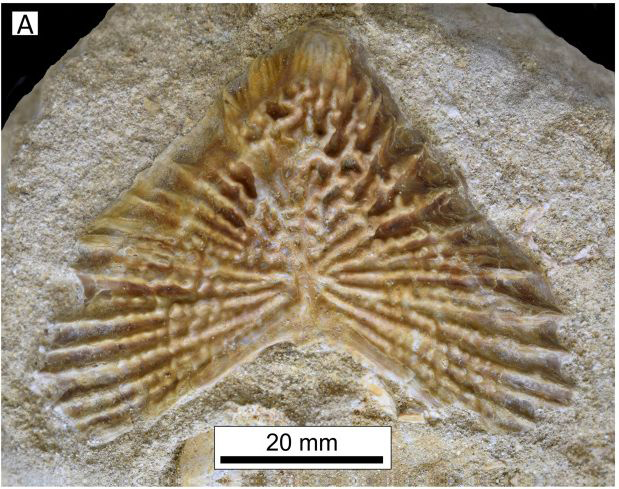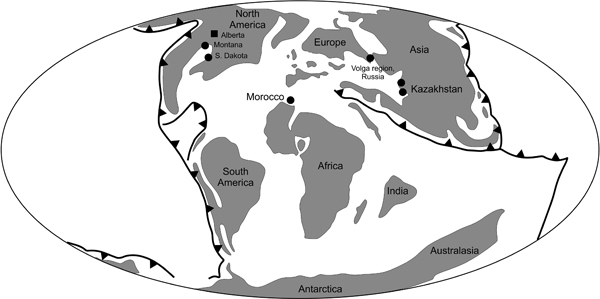The discovery of a fossil sturgeon scute demonstrates that these “royal fish” were present in North Africa during the Late Cretaceous. The single, fossil scute is the first ever sturgeon fossil to have been found in Africa. The scute is a bony plate embedded into the sturgeon’s skin. Scutes provided a form of dermal armour that evolved to help protect these very ancient fish.

A Significant Fossil Discovery
The sturgeon (there are more than two dozen extant species), belongs to the Acipenseriformes Order, which probably originated in the Late Triassic. Sturgeon fossils which are very similar to extant species, are known from Upper Cretaceous strata. Historically, they are associated with cooler waters of the Northern Hemisphere. The specimen was discovered by Professor David Martill (University of Portsmouth). It proves that these magnificent fish were present in Africa.
Sturgeons were more widespread in the Cretaceous than previously thought.
Professor Martill was exploring a well-known Moroccan fossil site during a field trip last November. He spotted a row of bony plates (bucklers) on a piece of rock and instinctively recognised the fossils represented the scutes from a sturgeon.
Discussing this significant fossil find, the Professor commented:
“It was a surprising discovery because all sturgeon species have been exclusively found in the Northern Hemisphere in the past. They’ve been located in North America, Europe, Russian Asia, Chinese Asia, but never in South America, Australia, Africa or India, which are the land masses that made up Gondwana, a supercontinent that existed around 336 million years ago and began breaking up around 150 million years ago.”

A “Royal Fish”
The sturgeon has long been prized for its meat and for its roe (eggs). The roe is commonly referred to as caviar. King Edward II of England declared that all sturgeon from the waters of Wales and England belong to the monarch. This declaration was made in the early 14th century. Since then, these fish have been regarded as “royal fish”.
Sadly, due to overfishing and pollution, many species of extant sturgeon are close to extinction.
Commenting on his African fossil discovery Professor Martill stated:
“Russian beluga caviar is one of the most expensive in the world. Little did we know that at one time an extremely rare African sturgeon could have been a source of this delicacy!”

Fossil Sturgeon Scute
Sturgeon are thought of as being “living fossils”, for they seem to have remained relatively unchanged since the time of Tyrannosaurus rex and Triceratops. Records from the 18th and 19th centuries indicate specimens reaching more than seven metres in length and weighing over 1.5 tonnes, but fish of this size are exceedingly rare today.
Professor Martill added:
“The very first sturgeons appear in the fossil record in the Late Triassic period in China. But the oldest true sturgeon ever discovered is probably a specimen in the Steve Etches collection from Dorset’s Jurassic Coast in England, which is mentioned in a book Steve and I wrote about fossils in the Kimmeridge Clay Formation.”
The discovery of a sturgeon fossil in Morocco complicates models of the geographical distribution of these fish during the Late Cretaceous.

The fossil specimen is now in the collection of the University King Hassan II, Casablanca.
Everything Dinosaur acknowledges the assistance of a media release from the University of Portsmouth in the compilation of this article.
The scientific paper: “A sturgeon (Actinopterygii, Acipenseriformes) from the Upper Cretaceous of Africa” by David M. Martill published in Cretaceous Research.
Visit Everything Dinosaur’s award-winning website: Everything Dinosaur.







Leave A Comment